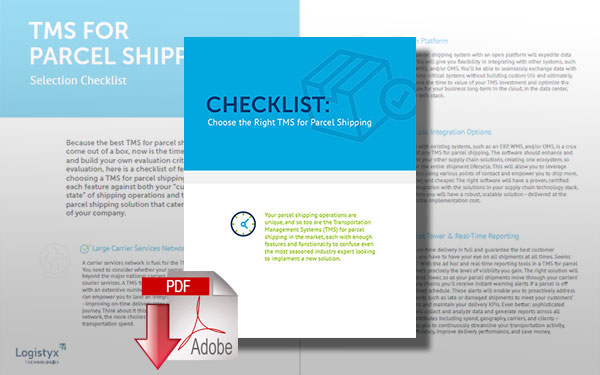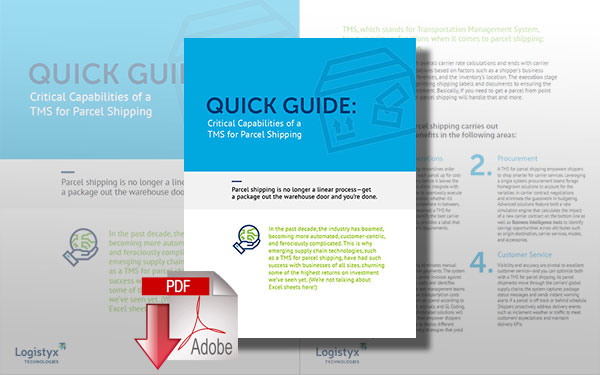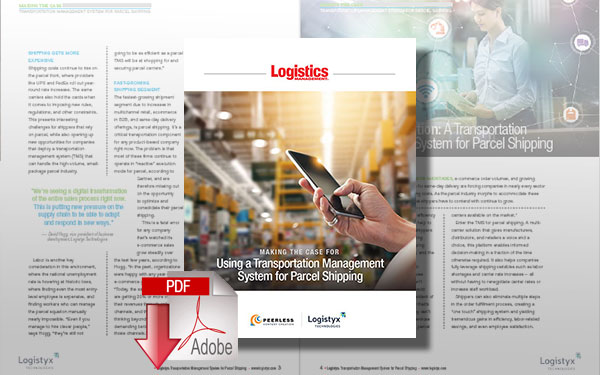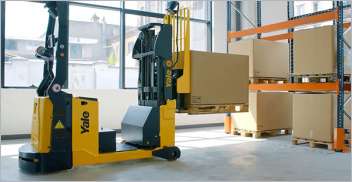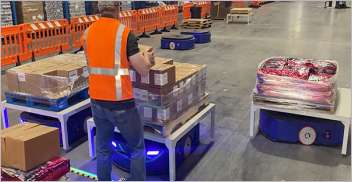Predictive analytics has fast become a staple of every industry, and it’s no great surprise.
The concept of using data to make better decisions holds water across business types; naturally, it applies to logistics, too.
The Necessary Data for Predictive Analytics in Parcel Shipping
If you are beginning your parcel shipping data journey you should consider leveraging what is most readily available.
This would include data from three levels of input: shipment level (what was manifested), event/visibility level (track and trace feeds), and invoicing level. More sophisticated organizations will leverage additional data from internal and external sources.
But the truth is, not all data is equally valuable. Therefore, it’s critical organizations understand and add the proper data points into their data structures in order to maximize predictive capabilities around cost savings.
Parcel costs include four key components or variables:
- Distance
- Speed to delivery
- Density
- Package size
A Business Intelligence platform will understand how these components affect spend within the transportation carrier landscape, visualize how and where changes are planning to (or should) occur, and retain this information as a “profile” that allows you, the shipper, to negotiate with carriers.
For instance, if you are implementing changes in fulfillment to increase ship-from-store or locate a new DC, understanding how these changes impact zone and carrier service-level downgrade options are critical.
Additionally, planned shifts towards more frequent, smaller-weight shipments would naturally draw negotiations towards lower weight bands and minimum revenue per package.
Without predictive analytics, you’re planning under the assumption the past will repeat itself, instead of building a data vision and creating a model for the future.
You’re leveraging the “what was” in planning, even though your profile characteristics may have changed slightly. And those slight changes can have huge impacts on spend…
Bottom line: If you’re not using predictive analytics, you’re placing your company at a competitive disadvantage. Let’s take a look at three key areas where you could be losing — or, with a positive spin, three clear ways in which predictive analytics can help reduce parcel shipping costs.
1. Rate Scenario Analyses
As data availability and data usage increases, so too does demand for simulation analysis.
- What is the impact of a proposed carrier rate change on spend?
- What are the available transportation savings with newly proposed carrier options?
- How will ship-from-store or new DC placement affect spend?
With proper BI tools and an accurate shipping model (profile), you can extrapolate transportation spend impacts across significant data sets. And when you rate or cost your plan against the available contract options, your negotiations/budgets begin to take shape.
To do so successfully, level of detail is critical. Like many things, the devil is in the details. Consideration towards use of accessories, fuel surcharges, and dimensional and core fees from each origin to destination are required; all must be calculated, normalized, and segregated across various carrier options.
Once the rate simulation is complete, you need to visualize the spend impacts across variables such as weight breaks, zones, regions, service levels, etc. This visualization will allow you to easily identify areas ripe for further negotiation.
If your data profile uses predictive analytics, you can meet the negotiation challenge head on — because most carriers will have this information, too — and you don’t want to start on your back foot when it comes to negotiations.
Lastly, simulations with proposed future DC placements or ship-from-store deployment impacts can have huge effects on use of carrier services. A rate scenario analysis paints the picture and empowers you to make cost-savvy supply chain decisions that align with your business strategy.
2. Real-Time Responses
Failures in the delivery process can be expensive to correct. Customers can be lost forever, if mismanaged. Effective exception management (visibility) with predictive analytics in parcel shipping facilitates a better customer experience and aids in overall supply chain health. But there are hundreds of types of status messages available from carriers, and it can be overwhelming. With a proper system to retrieve, store, interpret, and action the data, you can proactively manage your customer’s delivery experience.
Successful systems will normalize all of the different status messages available across carriers and place them into problem categories (exceptions) that require a call to action. You should be able to visualize and assign the right resources for real-time response and speedy resolution, minimizing customer service failures and reducing overall parcel shipment costs.
Today, customers not only expect a shipper to know when a shipment is held at customs, a delivery attempt is missed, a weather delay occurs, or a shipment is damaged or predicted to arrive late, they also assume the shipper will proactively work to resolve these problems.
Aside from managing the problems, your ability to measure carrier impacts and predict the future can allow you to better meet your customer expectations (manpower) and make better carrier network decisions (report cards) that impact exception management, ultimately reducing parcel shipping costs.
It also helps in procurement to understand ‘real’ service performance across a multitude of slicers such as carrier service, geography, weight break, and accessory type to create accurate carrier report cards to be used in the next step – procurement activities.
3. Real-Time Procurement
Finally, predictive analytics in logistics can help you reduce costs by making real-time procurement a real-life possibility. Identifying the ideal combination of carriers requires simulation analysis. If all carriers delivered to all regions with all services 100% on time, this would be a simpler exercise.
By aligning your customer commitments and carrier performance and rate simulation tools, you can quickly define the best cost options to meet the service-level commitments of your customers.
By understanding where carriers perform well (and not) and leveraging this information within your procurement simulations, you can rapidly evaluate predicted delivery performance and cost impacts, identifying the optimal carrier service combination based on factors such as service, price, capacity, and quality.
Reducing Parcel Shipment Costs with Predictive Analytics: One Simulation at a Time
Predictive analytics isn’t only for the most adept data scientists among us. It’s for every business. But to get to the point where you can capitalize on all of the great data to which you have access, you need a great system, too. If you lack proper insight into your contract history, or struggle with rate simulation and budgeting, then a TMS for parcel shipping with BI and data analytics is right up your supply chain.
Related White Paper
Choose the Right TMS for Parcel Shipping
Your parcel shipping operations are unique, and so too are the Transportation Management Systems (TMS) for parcel shipping in the market, each with enough features and functionality to confuse even the most seasoned industry expert. Download Now!
Critical Capabilities of a TMS for Parcel Shipping
Parcel shipping is no longer a linear process - get a package out the warehouse door and you’re done. Download Now!
Using a Transportation Management System for Parcel Shipping
Higher shipper costs, ongoing labor constraints, and a “want it now” mindset are driving more companies to implement TMS for parcel shipping. Download Now!
Article topics
Email Sign Up





